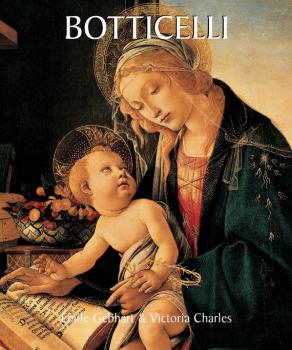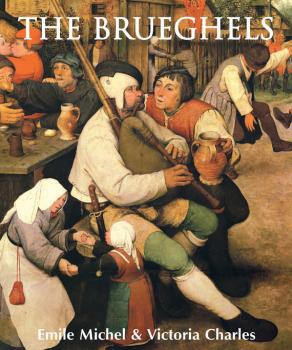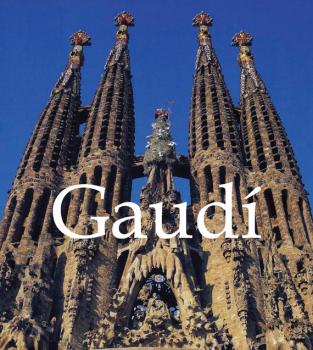Parkstone International Publishing
Все книги издательства Parkstone International PublishingLandscapes
Although considered a minor genre for a long time, the art of landscape has risen above its forebears – religious and historic painting – to become a genre of its own. Giorgione in Italy, the Brueghels of the Flemish School, Claude Lorrain and Poussain of the French School, the Dutch landscape painters and Turner and Constable of England are just a few of the great landscapists who have left their indelible mark on the history of landscape and the art of painting as a whole. After serving for a long time as a backdrop for paintings and as a skill-practising exercise for artists, nature came to be observed for its own sake and was incorporated into works of art as an illustration of an enlightened and scientific study of the world. Through continual change, it has inspired the greatest painters and has allowed some others, like Turner, to transcend the relentless search for mere realism in pictorial representation. Through this study, Émile Michel offers an exceptional panorama, from the 15th century to the present, of art and the way artists portray the world in all its splendour.
Art of War
Over the course of history, many wars have changed the political and cultural landscape of our world. While these events are defined by their upheaval and violence, they frequently contribute to the formation of the identity of entire generations or groups of people, and thus have significant cultural effects. Despite the physical and emotional destruction that occurs during these turbulent periods, they have inspired prolific artistic creation. In the wake of traumatic events over the centuries, a myriad of artists have produced works that immortalise the most dramatic moments of these wars in order to establish them in history forever. This book presents beautiful images depicting famous battles and war scenes, accompanied by the iconic text of the legendary Chinese military strategist Sun Tzu, as well as texts documenting notable moments of different wars, each written by well-known writers. From Uccello’s The Battle of San Romano to Picasso’s Guernica, this work offers a captivating look at artworks inspired by war and what they reveal about humanity’s history.
Botticelli
He was the son of a citizen in comfortable circumstances, and had been, in Vasari’s words, “instructed in all such things as children are usually taught before they choose a calling.” However, he refused to give his attention to reading, writing and accounts, continues Vasari, so that his father, despairing of his ever becoming a scholar, apprenticed him to the goldsmith Botticello: whence came the name by which the world remembers him. However, Sandro, a stubborn-featured youth with large, quietly searching eyes and a shock of yellow hair – he has left a portrait of himself on the right-hand side of his picture of the Adoration of the Magi – would also become a painter, and to that end was placed with the Carmelite monk Fra Filippo Lippi. But he was a realist, as the artists of his day had become, satisfied with the joy and skill of painting, and with the study of the beauty and character of the human subject instead of religious themes. Botticelli made rapid progress, loved his master, and later on extended his love to his master’s son, Filippino Lippi, and taught him to paint, but the master’s realism scarcely touched Lippi, for Botticelli was a dreamer and a poet. Botticelli is a painter not of facts, but of ideas, and his pictures are not so much a representation of certain objects as a pattern of forms. Nor is his colouring rich and lifelike; it is subordinated to form, and often rather a tinting than actual colour. In fact, he was interested in the abstract possibilities of his art rather than in the concrete. For example, his compositions, as has just been said, are a pattern of forms; his figures do not actually occupy well-defined places in a well-defined area of space; they do not attract us by their suggestion of bulk, but as shapes of form, suggesting rather a flat pattern of decoration. Accordingly, the lines which enclose the figures are chosen with the primary intention of being decorative. It has been said that Botticelli, “though one of the worst anatomists, was one of the greatest draughtsmen of the Renaissance.” As an example of false anatomy we may notice the impossible way in which the Madonna’s head is attached to the neck, and other instances of faulty articulation and incorrect form of limbs may be found in Botticelli’s pictures. Yet he is recognised as one of the greatest draughtsmen: he gave to ‘line’ not only intrinsic beauty, but also significance. In mathematical language, he resolved the movement of the figure into its factors, its simplest forms of expression, and then combined these various forms into a pattern which, by its rhythmical and harmonious lines, produces an effect upon our imagination, corresponding to the sentiments of grave and tender poetry that filled the artist himself. This power of making every line count in both significance and beauty distinguishes the great master-draughtsmen from the vast majority of artists who used line mainly as a necessary means of representing concrete objects.
The Brueghels
Pieter Brueghel was the first important member of a family of artists who were active for four generations. Firstly a drawer before becoming a painter later, he painted religious themes, such as Babel Tower, with very bright colours. Influenced by Hieronymus Bosch, he painted large, complex scenes of peasant life and scripture or spiritual allegories, often with crowds of subjects performing a variety of acts, yet his scenes are unified with an informal integrity and often with wit. In his work, he brought a new humanising spirit. Befriending the Humanists, Brueghel composed true philosophical landscapes in the heart of which man accepts passively his fate, caught in the track of time.
Diego Rivera
They met in 1928, Frida Kahlo was then 21 years old and Diego Rivera was twice her age. He was already an international reference, she only aspired to become one. An intense artistic creation, along with pain and suffering, was generated by this tormented union, in particular for Frida. Constantly in the shadow of her husband, bearing his unfaithfulness and her jealousy, Frida exorcised the pain on canvas, and won progressively the public’s interest. On both continents, America and Europe, these commited artists proclaimed their freedom and left behind them the traces of their exceptional talent. In this book, Gerry Souter brings together both biographies and underlines with passion the link which existed between the two greatest Mexican artists of the twentieth century.
American Realism
Urban realism, snow-covered streets of New York, boxing matches, children on the banks of a river, the painters of the Ash Can School preferred realistic images. Their paintings are a true hymn to noise and sensations. This unconventional movement enabled the birth of a true national artistic identity which broke free from the establishment. The Ash Can School resolutely promoted the affirmation of the modernist current of American art. Edward Hopper, who was a student of Robert Henri, embraced the principles of this movement and brought them to another level.
1000 Erotic Works of Genius
Different eras and civilisations have treated erotic images with varying acceptance and different concepts of erotica and these tendencies are reflected within the works themselves. From ancient statues devoted to fertility to Renaissance engravings designed to encourage procreation within marriage, erotic art has always held an important place in society. Here, for the first time, 1,000 authentic images of erotic art have been brought together, spanning the centuries and civilisations to demonstrate the evolution of the genre. In an era such as ours when eroticism is abundant in advertising and the media, this book gives a refreshing insight into the background of erotic imagery, highlighting the artistic value of beautiful works of eroticism executed with skill.
The Encyclopedia of Erotica
What happened to the insolence of the 18th-century libertines or to the carefree excesses of the Belle Époque and its legalized brothels? They have merely been inhibited and buried by the nowadays political correctness and the aggressive one-eyed morality. This book disregards conventional thinking and presents 800 reproductions that illustrate erotic art from Ancient Greece down to the present era in both Europe and Asia: when reproduction is not seen as an end in itself. With no hesitation nor inhibition, the author explains why erotic art is a key factor of societal development.
Cézanne
Since his death 200 years ago, Cézanne has become the most famous painter of the nineteenth century. He was born in Aix-en-Provence in 1839 and the happiest period of his life was his early youth in Provence, in company with Emile Zolá, another Italian. Following Zolá’s example, Cézanne went to Paris in his twenty-first year. During the Franco-Prussian war he deserted the military, dividing his time between open-air painting and the studio. He said to Vollard, an art dealer, “I’m only a painter. Parisian wit gives me a pain. Painting nudes on the banks of the Arc [a river near Aix] is all I could ask for.” Encouraged by Renoir, one of the first to appreciate him, he exhibited with the impressionists in 1874 and in 1877. He was received with derision, which deeply hurt him. Cézanne’s ambition, in his own words, was “to make out of Impressionism something as solid and durable as the paintings of the museums.” His aim was to achieve the monumental in a modern language of glowing, vibrating tones. Cézanne wanted to retain the natural colour of an object and to harmonise it with the various influences of light and shade trying to destroy it; to work out a scale of tones expressing the mass and character of the form. Cézanne loved to paint fruit because it afforded him obedient models and he was a slow worker. He did not intend to simply copy an apple. He kept the dominant colour and the character of the fruit, but heightened the emotional appeal of the form by a scheme of rich and concordant tones. In his paintings of still-life he is a master. His fruit and vegetable compositions are truly dramatic; they have the weight, the nobility, the style of immortal forms. No other painter ever brought to a red apple a conviction so heated, sympathy so genuinely spiritual, or an observation so protracted. No other painter of equal ability ever reserved for still-life his strongest impulses. Cézanne restored to painting the pre-eminence of knowledge, the most essential quality to all creative effort. The death of his father in 1886 made him a rich man, but he made no change in his abstemious mode of living. Soon afterwards, Cézanne retired permanently to his estate in Provence. He was probably the loneliest of painters of his day. At times a curious melancholy attacked him, a black hopelessness. He grew more savage and exacting, destroying canvases, throwing them out of his studio into the trees, abandoning them in the fields, and giving them to his son to cut into puzzles, or to the people of Aix. At the beginning of the century, when Vollard arrived in Provence with intentions of buying on speculation all the Cézannes he could get hold of, the peasantry, hearing that a fool from Paris was actually handing out money for old linen, produced from barns a considerable number of still-lifes and landscapes. The old master of Aix was overcome with joy, but recognition came too late. In 1906 he died from a fever contracted while painting in a downpour of rain.
Gaudí
Spanish architect and designer, Antoni Gaudí (1852-1926) was an important and influential figure in the history of contemporary Spanish art. His use of colour, application of a range of materials and the introduction of organic forms into his constructions were an innovation in the realm of architecture. In his journal, Gaudí freely expressed his own feelings on art, “the colours used in architecture have to be intense, logical and fertile.” His completed works (the Casa Batlló, 1905-1907 and the Casa Milà, 1905-1910) and his incomplete works (the restoration of the Poblet Monastery and the altarpiece of Alella in Barcelona) illustrate the importance of this philosophy. His furniture designs were conceived with the same philosophy, as shown, for example, in his own office (1878) or the lamps in the Plaza Real in Barcelona. The Sagrada Familia (1882-1926) was a monumental project which eventually took over his life (it was still incomplete at the time of his death).









